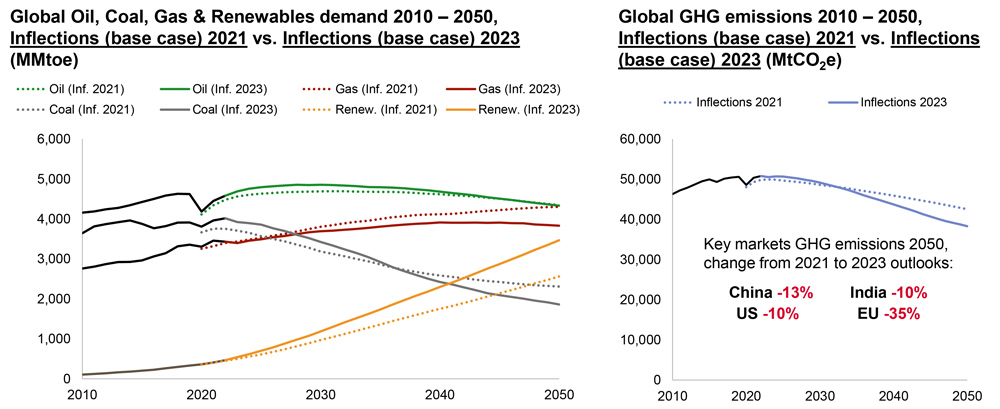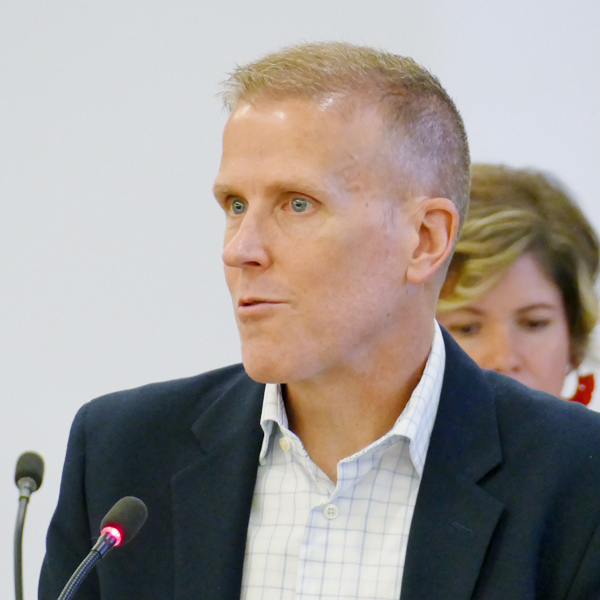DFW AIRPORT, Texas — Public Utility Commissioner Will McAdams made public his intention to resign before next year during an SPP stakeholder meeting Nov. 28.
Adams, whose departure has been rumored for several weeks, said his family and his health both became factors in his decision to step down.
“This has been a challenging duty. I’ve enjoyed it, it’s been meaningful, but there were considerable pressures on both the family and the health,” McAdams told RTO Insider during a break in the SPP meeting. “None of those pressures looked to resolve themselves in the near term. I have a young family and I need to be more attentive to them.”
McAdams and his wife have three children less than 10 years old. In addition to his responsibilities for the PUC, he also has chaired the Resource and Energy Adequacy Leadership (REAL) Team addressing SPP’s resource adequacy challenges and was elected last month to serve as president of the RTO’s Regional State Committee (RSC) in 2024.
In his spare time, McAdams has taken on a greater role in managing his family’s ranch in Southeast Texas.
“It’s multiple things all converging at the same time,” he said. “This decision has not been and was never going to be easy, but it’s been some of the most meaningful work of my life.”
McAdams’ term on the PUC expires Sept. 1, 2025. His resignation will leave the five-person PUC with two vacancies. Peter Lake resigned as chair in June and has been replaced by Kathleen Jackson as the commission’s interim chair.
Gov. Greg Abbott (R) appoints the PUC’s commissioners. Appointees must be confirmed by the Senate, which is in a fourth consecutive special session.
McAdams also leaves a sizeable hole in SPP’s initiative. His leadership of the REAL Team has been praised by the RTO’s CEO, Barbara Sugg, and members of the team.
Omaha Public Power District’s Colton Kennedy, chair of SPP’s Supply Adequacy Working Group and a key player on the REAL Team, said McAdams is a “pivotal force” in setting the direction of policy.
“Chairman McAdams has had an exceptional ability to steer discussions forward amidst uncertainty,” Kennedy said. “His leadership comes at a crucial time in the evolution of the electric grid.”
“I appreciate his leadership. He is very structured, he keeps people motivated, he keeps the conversation going and he keeps the issues moving forward,” Evergy’s Denise Buffington, the REAL Team’s vice chair, said. “I like the pace at which he does it. He does keep things moving and sets targets. It’s complex work, but the objective is not to spin out.”
McAdams said the RSC, composed of SPP state regulators, will “recompute” both the committee’s and the REAL Team’s leadership. A state commissioner will take over the REAL Team’s chairmanship; South Dakota’s Kristie Fiegen and Nebraska’s Chuck Hutchinson hold two of the three commissioners’ slots.
Buffington said McAdams was instrumental in setting the team’s work plans. “Now, it’s executing on that and making sure it stays on the rails. It’s constant monitoring, making sure we’re on track and not getting overwhelmed,” she said.
SPP said the RSC’s vice-president elect, Minnesota’s John Tuma, will serve as the group’s president in 2024. The committee will hold an election next year to fill the vice president’s open position.
“As we move into the spring, you’ll have a more defined outlook on how this organization will proceed forward,” McAdams told the REAL Team.
He said he will continue to chair the group’s final 2023 meeting. He said he wants to close out the team’s objectives for the year before turning the chairmanship over to his replacement.
“I’ve appreciated the work and effort that everybody’s put into this. I think everybody realizes that this is an important time in our industry and in our history,” McAdams said. “I was able to help guide part of that, but this was never going to be up to any one person, any one organization. It’s going to require a repeat rotation of good people into these jobs to help prepare for the next winter, to help prepare for the next summer, to help prepare for the next need, especially as those needs continue to grow.”
Abbott appointed McAdams to the PUC in April 2021, part of the commission’s overhaul after the deadly winter storm that killed hundreds of Texans and nearly imploded the ERCOT grid. The three incumbents all resigned or left the PUC, with McAdams and Lake appointed as the first two new commissioners. Texas lawmakers also increased the PUC’s membership from three to five commissioners.
“I am grateful to the governor for giving me the opportunity,” McAdams said. “It’s just that everybody comes to a time where they need to turn it over to fresh blood. And it’s that time.”
McAdams previously served as president of the Associated Builders and Contractors of Texas after spending more than 10 years in state government. He was an adviser to House Speaker Dennis Bonnen and held several senior staff positions within the Senate.
Following graduation from Texas A&M University, McAdams served four years as an infantry officer in the U.S. Army, retiring as a captain.

